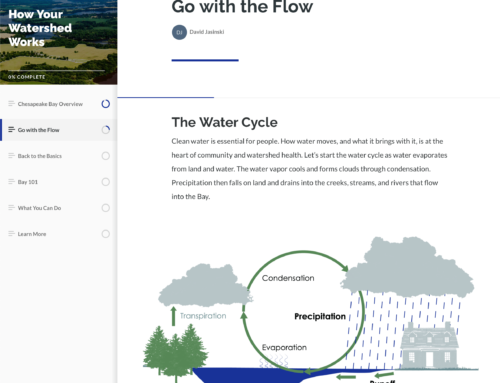Green Fin Team member Lauren Huey attended the Data Is Beautiful seminar last month hosted by Information Is Beautiful guru David McCandless to get some tips and tricks for creating infographics and visualizations. This got us talking around the office about what our favorite graphics, maps, or other visualizations are. Tall order given that we see so many in our line of work. We asked everyone to come up with their favorite and write a little explanation why. Read on to see what the team came up with!
Lauren
Waffle charts are the hip, fresh cousin of the much-maligned pie chart, and I find myself incorporating them whenever I can. They can give context to large numbers or add visual interest to cumbersome datasets. For example, Athan Mavrantonis (@amavrantonis) posted a graphic on Twitter that illustrated the difference in perception of a percentage and the raw number when it comes to food insecurity:
 The waffle chart works brilliantly here to illustrate how small one in one hundred seems, compared to the somewhat unfathomable 74 million individuals who are actually starving in the world.
The waffle chart works brilliantly here to illustrate how small one in one hundred seems, compared to the somewhat unfathomable 74 million individuals who are actually starving in the world.

One other example of how a waffle chart can be used to express more complex data is the interactive waffle chart from visual journalists Polygraph. The graphic on the left shows that almost 40% of the 4000 surveyed films fail the Bechdel test, a simple measure for the representation of women in fiction.
 The graphic on the right shows the same 4000 films, but viewed through the filter of films that had all women writers. This second waffle chart expresses two important points effortlessly: 1) when women write films, they are much less likely to fail the Bechdel Test, and 2) films written solely by women account for only 9% of the films surveyed (for your reference, 60% of the 4000 films have writers that are only men). The sea of gray dots overwhelming the colors communicates that point well without needing more explanation.
The graphic on the right shows the same 4000 films, but viewed through the filter of films that had all women writers. This second waffle chart expresses two important points effortlessly: 1) when women write films, they are much less likely to fail the Bechdel Test, and 2) films written solely by women account for only 9% of the films surveyed (for your reference, 60% of the 4000 films have writers that are only men). The sea of gray dots overwhelming the colors communicates that point well without needing more explanation.
 In addition to conveying data, waffle charts are a great option for introducing more graphical elements to your presentation slides, page layouts, posters, or whatever else you’re creating. Green Fin Studio created a waffle chart of the land use in the Chesapeake Bay watershed using icons that represent forest, farms, suburban and urban development, and other development. The graphic was included in an educational module providing an overview of the Chesapeake Bay watershed for local government officials, so engaging graphics and quick information transfer were top priority. See the full overview module here.
In addition to conveying data, waffle charts are a great option for introducing more graphical elements to your presentation slides, page layouts, posters, or whatever else you’re creating. Green Fin Studio created a waffle chart of the land use in the Chesapeake Bay watershed using icons that represent forest, farms, suburban and urban development, and other development. The graphic was included in an educational module providing an overview of the Chesapeake Bay watershed for local government officials, so engaging graphics and quick information transfer were top priority. See the full overview module here.
Dave

What immediately popped into my head was Charles Joseph Minard’s map of Napoleon’s failed Russian campaign. But that seemed a bit obvious and likely at the top of a lot of peoples’ list. So I dug a little deeper and remembered a David McCandless graphic on the sources and fate of methane, the other major greenhouse gas.
I think this graphic is a fantastic example of how a well designed infographic can introduce an issue, communicate the scale of the problem, but also present some possible solutions. The use of simple graphics at the top communicate bite-sized pieces of information that introduce what methane is and why it is a problem. Then the combination of scaled arrows and icons convey the sources, sinks, and surplus of methane in the atmosphere in a visually appealing and easy to understand format. It also shows that all sources are not from human origin. And at the end we are given at least some indication that all is not lost and there are potential solutions to the problem.

I was inspired by McCandless’s approach and decided to apply to an issue that is very near and dear to the folks that live around Chesapeake Bay (and all estuaries for that matter) – nutrient pollution. After all, imitation is the sincerest form of flattery!
Using numbers from the Chesapeake Bay Program, I created a graphic that explains nitrogen and phosphorus pollution and what the major contributors are in Chesapeake Bay. The graphic also explains how this pollution impacts the health of the Bay. I think that maybe my version is unfinished as, unlike McCandless, I don’t finish up with the potential solutions to nutrient pollution. I’ll keep working on it!
Shirley
Federica Fragapane is an Italian information designer who has visualized a multitude of topics from children’s books about Earth to carbon dioxide emissions. Her simple designs combine infographics and illustration, using elegant lines and colors to form eye-catching and informative visualizations.
One of my most recently discovered and favorite visualizations Fragapane created is called “The Shape of Dreams,” a visual exploration of Google searches for the interpretation of dreams. I came across this visualization as I was searching for the meaning to my own dreams (anyone else have a recurring nightmare of their teeth falling out?) and was comforted by the fact that I was not alone.

The Shape of Dreams website analyzes Google trend data for seven languages (English, Arabic, French, Japanese, Portuguese, Russian, and Spanish) from 2009–2019 and looks at it from four points of view, separated into four chapters. Each chapter first explains some insights and then delves into an interactive visualization that allows the reader to play with the data.

The visualization for data in Chapter 3: A Time for Dreams was the most simple, using a line chart to represent the interest over time for a single subject worldwide. However, I thought the results were particularly interesting where peaks in searches coincided with real-life events. For example, Dreaming about tsunami had a sharp peak in March 2011, which coincided with an earthquake and tsunami occurring in Japan at the same time.

Fragapane managed to turn a decade of search data about dreams from seven languages into intuitive and easy-to-understand illustrations based on subject, category, interest, and even common connections across languages. Her other work is just as thoughtfully illustrated and inspirational.

